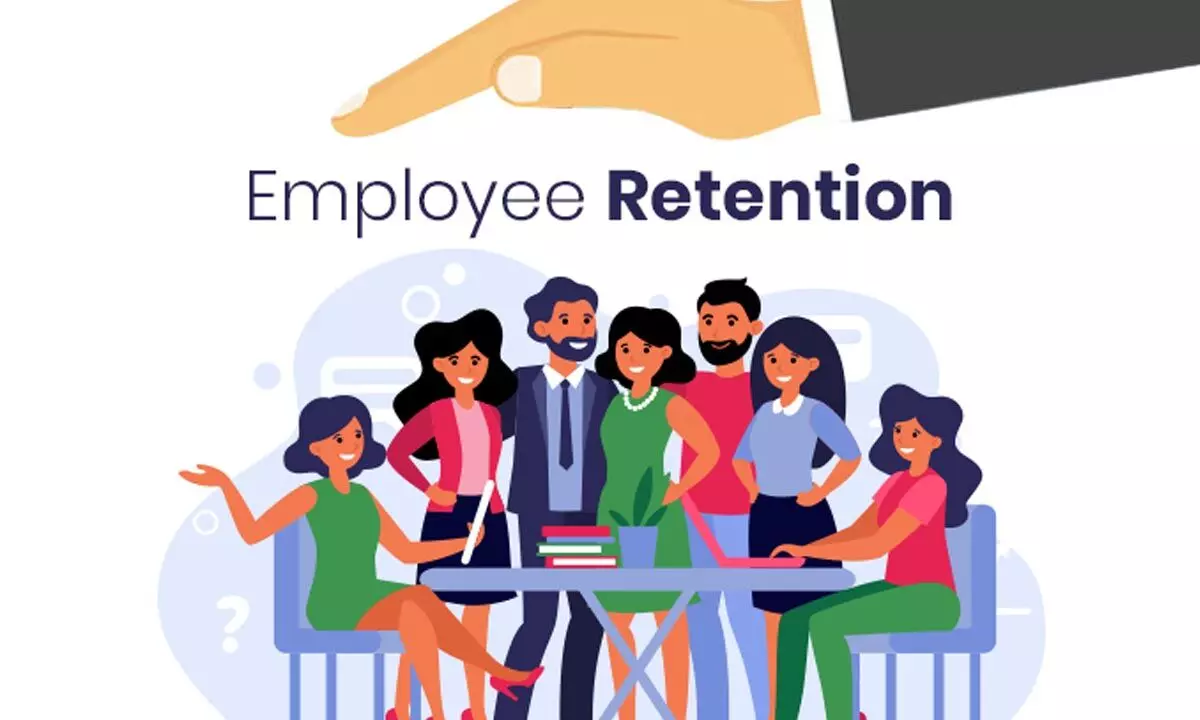In the ever-evolving landscape of entrepreneurship, startups stand as the pioneers of innovation, disruption, and growth. These fledgling ventures are fueled by the passion and vision of their founders, striving to turn groundbreaking ideas into reality. However, the journey from concept to market domination is not without its challenges, and one of the most critical determinants of a startup’s success lies in its ability to effectively hire employees for startup.
How to Hire Employees for Startup: Key Tips
1. Defining Your Hiring Needs
As your startup gains traction and begins to take shape, the time will inevitably come to expand your team. Defining how to hire employees for startup needs is a critical step that sets the stage for assembling a workforce that aligns with your vision, goals, and operational requirements. This process involves a careful analysis of the roles and responsibilities your startup requires, the skill sets and qualifications necessary for success, and the creation of detailed job descriptions and role profiles.
A. Identifying Roles and Responsibilities
Before you start posting job openings, it’s essential to gain a clear understanding of the specific roles and responsibilities your startup needs to fill. Start by assessing your current team’s strengths and weaknesses and identifying any gaps in expertise or capacity. Consider the core functions of your business, such as product development, marketing, sales, operations, finance, and customer support.
Map out the organizational structure and hierarchy that will best support your startup’s growth trajectory. Are you looking for specialists who excel in a specific area, or do you need generalists who can wear multiple hats in a fast-paced environment? Clearly define each role’s scope, reporting lines, and key responsibilities to ensure that candidates know what is expected of them from the outset.
B. Determining Skill Sets and Qualifications
With roles and responsibilities in mind, turn your attention to how to hire employees for startup and the skill sets and qualifications required for each position. Start by listing the essential hard skills, such as technical expertise, industry-specific knowledge, and proficiency in relevant tools or software.
Consider the level of experience and education necessary for success in each role. However, don’t underestimate the importance of soft skills. Communication, problem-solving, adaptability, teamwork, and leadership abilities are often just as crucial to a candidate’s success in a startup environment. Look for individuals who not only possess the technical competencies but also exhibit a strong cultural fit and a willingness to learn and grow alongside your startup.
C. Creating Job Descriptions and Role Profiles
With a clear understanding of your hiring needs, it’s time to craft compelling and accurate job descriptions and role profiles. A well-crafted job description serves as a two-way communication tool: it informs potential candidates about the role’s expectations and responsibilities while also helping you attract individuals who are genuinely excited about the opportunity.
When creating job descriptions and profiles, consider the following elements:
- Title and Summary: Use a clear and concise job title that reflects the role’s purpose. Provide a brief overview of the role and its significance within the organization.
- Key Responsibilities: Outline the primary tasks and duties associated with the role. Be specific and focus on the outcomes you expect from the candidate.
- Qualifications: List the required and preferred qualifications, including education, experience, certifications, and any relevant skills.
- Skills: Enumerate the technical and soft skills necessary for success in the role. Highlight skills that are crucial for your startup’s growth and competitiveness.
- Culture and Values: Integrate your startup’s culture, values, and mission into the job description to attract candidates who resonate with your organizational ethos.
- Benefits and Perks: Highlight any unique benefits, perks, or opportunities for growth that your startup offers to potential employees.
Related Article: How to Hire a Contract Employee
2. Crafting a Compelling Employer Brand

In a competitive job market, where startups vie for top talent alongside established corporations, knowing how to hire employees for startup is crucial. Your employer brand becomes a powerful tool for attracting, engaging, and retaining exceptional employees. Your startup’s employer brand is more than just a logo or a tagline; it’s the essence of your company’s identity, culture, values, and aspirations.
Crafting a compelling employer brand is a strategic endeavor that involves building a unique and authentic narrative that resonates with potential candidates. This process encompasses building your startup’s identity and culture, effectively communicating your mission and vision, and showcasing the values and benefits that set your organization apart.
A. Building Your Startup’s Identity and Culture
Your startup’s identity and culture form the bedrock of your employer brand. Consider the following steps to build a strong foundation:
- Define Core Values: Identify the values that guide your startup’s actions and decisions. These values should be authentic, meaningful, and reflective of the work environment you aim to create.
- Create a Vibrant Culture: Foster a work culture that encourages collaboration, innovation, and a sense of belonging. Encourage open communication, celebrate achievements, and provide opportunities for personal and professional growth.
- Embrace Diversity and Inclusion: Prioritize diversity and inclusivity in your startup’s culture. A diverse team brings a variety of perspectives and experiences, enriching problem-solving and creativity.
- Lead by Example: As a founder or leader, embody the values and behaviors you want to see in your team. Your actions set the tone for the entire organization.
B. Communicating Your Mission and Vision
Your startup’s mission and vision are not just statements; they are the driving force behind your employer brand. Effectively communicate these aspects to create a sense of purpose and direction:
- Craft a Clear Mission Statement: Define your startup’s mission in a concise and inspiring manner. Explain why your company exists and the positive impact it aims to make in the world.
- Articulate Your Vision: Describe your startup’s long-term goals and aspirations. Share your vision for the future and how employees’ contributions will help realize that vision.
- Storytelling: Use storytelling to convey your startup’s journey, challenges, and triumphs. Personal anecdotes and real-life examples humanize your brand and make it relatable.
C. Showcasing Values and Benefits
To attract top talent, you need to showcase the values and benefits that make your startup an attractive place to work:
- Highlight Employee Well-being: Emphasize how your startup prioritizes work-life balance, mental health, and overall well-being. Showcase wellness programs, flexible schedules, and other initiatives.
- Professional Development: Illustrate your commitment to employee growth by showcasing opportunities for skill development, training, mentorship, and advancement.
- Innovative Environment: Showcase your startup’s innovative and creative atmosphere. Highlight how employees will be encouraged to think outside the box and contribute to cutting-edge solutions.
- Impact and Meaning: Emphasize the meaningful work employees will be engaged in and the positive impact they’ll have on your startup’s success and the world at large.
- Perks and Rewards: Highlight unique perks, benefits, and rewards that come with being part of your startup. These could include equity options, flexible work arrangements, team-building activities, and more.
Related Article: How to Hire Part-Time Employees
3. Sourcing Candidates

Sourcing the right candidates for your startup is a crucial step in building a high-performing team that drives your company’s success. To find the individuals who align with your startup’s culture and values, you need a well-rounded approach that taps into various channels. Here are some effective strategies for how to hire employees for startup and sourcing candidates:
A. Leveraging Online Job Platforms
Online job platforms have become a go-to resource for both job seekers and employers. To leverage these platforms effectively:
- Choose the Right Platforms: Select job boards that cater to your industry and the roles you’re hiring for. General platforms like LinkedIn, Indeed, and Glassdoor can be excellent starting points.
- Craft Compelling Job Listings: Create clear, engaging, and detailed job listings that highlight your startup’s unique offerings and requirements. Use keywords to optimize visibility.
- Utilize Screening Tools: Many job platforms offer tools that allow you to filter candidates based on specific criteria, helping you focus on those who meet your prerequisites.
B. Tapping into Professional Networks
Networking can be a powerful way to discover candidates who might not be actively searching for jobs. Here’s how to tap into professional networks:
- LinkedIn: Connect with professionals in your industry and engage with relevant groups. Use your network to seek referrals and recommendations.
- Industry Events: Attend conferences, seminars, and workshops related to your startup’s field. These events provide opportunities to meet potential candidates in person.
- Alumni Networks: Leverage your own educational and professional networks, as well as those of your existing team members, to tap into a pool of skilled candidates.
Related Artilce: How to Hire Staff for Small Business
C. Hosting Job Fairs and Networking Events
Hosting or participating in job fairs and networking events can help you directly interact with potential candidates:
- Startup-Specific Events: Participate in startup-focused events or career fairs that attract entrepreneurial-minded individuals who are keen on joining a dynamic environment.
- Local Universities: Collaborate with universities to organize job fairs or workshops to connect with students and recent graduates.
- Open Houses: Host open houses at your startup’s office to provide candidates with a glimpse of your company culture and day-to-day operations.
D. Utilizing Social Media and Employee Referrals
Leveraging social media and employee referrals can yield candidates who are already familiar with your startup’s values and work environment:
- Social Media Platforms: Use platforms like LinkedIn, Twitter, and Facebook to share job openings, company updates, and engaging content that showcases your startup’s culture.
- Employee Referrals: Encourage your existing employees to refer qualified candidates from their networks. Consider implementing a referral bonus program to incentivize referrals.
- Showcasing Employee Stories: Share stories and testimonials from current employees on social media, offering insights into their experiences and what makes your startup a great place to work.
Bonus Article: Cost of Hiring First Employee
4. Screening and Selecting Candidates

Identifying the right candidates to join your startup team is a pivotal phase in the hiring process. Effective screening and selection techniques, tailored to “how to hire employees for startup,” ensure that you’re not only evaluating candidates based on their qualifications but also assessing their potential cultural fit and alignment with your startup’s goals. Here’s a comprehensive guide to help you make informed decisions when screening and selecting candidates:
A. Reviewing Resumes and Portfolios
The initial step in screening candidates involves reviewing their resumes and portfolios:
- Skills and Experience: Assess whether candidates possess the necessary skills and experience outlined in the job description. Look for relevant accomplishments, projects, and responsibilities.
- Consistency: Check for consistency in employment history, educational background, and any gaps in their work experience.
- Relevance: Pay attention to how well their past roles align with the requirements of the position you’re hiring for.
B. Conducting Initial Phone Screenings
Phone screenings provide an opportunity to engage with candidates and gather preliminary insights:
- Confirming Qualifications: Validate the information on the resume and ask questions to ensure the candidate meets the basic requirements.
- Cultural Fit: Gauge their enthusiasm for your startup’s mission, values, and culture. Assess their communication skills, attitude, and level of interest.
- Clarifying Expectations: Provide an overview of the role, responsibilities, and expectations. This is a chance to answer their questions and assess their understanding of the position.
Discover the stages of team development and unlock the secrets to building a cohesive and high-performing startup team. Read our in-depth article now!
C. Implementing Skill and Aptitude Assessments
Skill and aptitude assessments help evaluate candidates’ capabilities more objectively:
- Technical Tests: Depending on the role, administer technical assessments to measure candidates’ proficiency in specific skills or tools.
- Problem-Solving Tasks: Present candidates with real-world scenarios or challenges relevant to the role and assess their problem-solving abilities.
- Cognitive and Personality Assessments: Use validated assessments to gain insights into a candidate’s cognitive abilities, personality traits, and work style.
D. Structured Interviews and Behavioral Questions
Structured interviews with well-prepared questions contribute to consistent and fair evaluations:
- Behavioral Questions: Pose questions that prompt candidates to share examples of their past experiences and how they handled specific situations.
- Cultural Fit: Ask questions related to your startup’s values and culture to assess whether candidates align with your company’s ethos.
- Role-Specific Scenarios: Present candidates with hypothetical scenarios that simulate challenges they might face in the role. Evaluate their problem-solving and decision-making skills.
- Soft Skills: Inquire about candidates’ communication skills, teamwork abilities, adaptability, and leadership potential.
Ready to tackle the challenges of hiring employees for your startup? Dive into our comprehensive article for valuable insights and strategies!
5. Interviewing Techniques

Conducting effective interviews is a crucial step in identifying the right candidates for your startup team. Interviews provide valuable opportunities to delve deeper into candidates’ qualifications, skills, and fit with your company culture. Here’s a comprehensive guide on how to hire employees for a startup and master interviewing techniques:
A. Types of Interviews: One-on-One, Panel, Behavioral
Different interview formats serve distinct purposes and offer unique insights into candidates:
- One-on-One Interviews: These are traditional interviews where a single interviewer assesses a candidate’s qualifications, experience, and fit for the role. They allow for in-depth discussions and rapport-building.
- Panel Interviews: Involving multiple interviewers, panel interviews provide a comprehensive evaluation from various perspectives. Panelists can assess different aspects of a candidate’s potential contribution.
- Behavioral Interviews: This technique focuses on past behaviors as indicators of future performance. Candidates are asked to provide specific examples of how they handled situations relevant to the job.
B. Asking Relevant and Insightful Questions
Crafting thoughtful questions helps you uncover a candidate’s capabilities, motivations, and alignment with your startup’s needs:
- Role-Specific Questions: Inquire about candidates’ experience and expertise directly related to the role, such as specific projects they’ve worked on or challenges they’ve overcome.
- Situational and Scenario-Based Questions: Pose hypothetical situations to gauge how candidates approach problem-solving and critical thinking.
- Behavioral Questions: Encourage candidates to share concrete examples of their past experiences, highlighting their skills and how they’ve handled challenges in the past.
- Motivation and Fit: Explore candidates’ motivations for joining your startup and their understanding of your company’s mission and values.
C. Evaluating Cultural Fit and Soft Skills
Assessing cultural fit and soft skills is essential to ensure candidates align with your startup’s environment and values:
- Cultural Fit Questions: Ask candidates about their work preferences, communication styles, and values to gauge their potential fit within your startup’s culture.
- Teamwork and Collaboration: Inquire about candidates’ experiences working in teams, resolving conflicts, and contributing to a collaborative environment.
- Adaptability and Learning: Assess candidates’ ability to adapt to new challenges, learn quickly, and thrive in a fast-paced startup setting.
- Communication and Leadership: Evaluate candidates’ communication skills, their ability to convey complex ideas, and their potential for leadership roles.
Discover the proven guide on hiring process flowchart: Unlock success in building your dream startup team! Read now.
6. Assessing Cultural Fit

Evaluating cultural fit is a critical aspect of the hiring process for how to hire employees for startups, going beyond skills and qualifications. Ensuring that candidates align with your startup’s culture and values contributes to a harmonious and productive work environment. Here’s a comprehensive guide to effectively assess cultural fit during the hiring process:
A. Defining Your Startup’s Culture and Values
Before assessing cultural fit, it’s essential to have a clear understanding of your startup’s culture and values:
- Identify Core Values: Define the guiding principles that drive your startup’s decisions, interactions, and overall atmosphere.
- Characterize Your Culture: Describe the work environment, communication style, and collaborative dynamics that characterize your startup.
- Mission and Vision: Articulate your startup’s mission and long-term vision, outlining the impact you aim to make in your industry or society.
B. Gauging Cultural Alignment During Interviews
Interviews provide valuable insights into a candidate’s alignment with your startup’s culture:
- Behavioral Questions: Craft questions that directly relate to your startup’s values and culture. Ask candidates to share experiences that demonstrate their alignment with these principles.
- Work Environment Preferences: Inquire about candidates’ preferences regarding work style, communication, and collaborative approaches to assess their compatibility.
- Conflict Resolution: Discuss how candidates handle conflicts and differences of opinion, as these situations reveal their adaptability and interpersonal skills.
- Passion and Mission: Encourage candidates to express their enthusiasm for your startup’s mission and explain how they envision contributing to its success.
C. Incorporating Team Members in the Assessment
Incorporating current team members in the cultural fit assessment process can provide diverse perspectives:
- Panel Interviews: Conduct panel interviews that include members from different teams or departments. Panelists can assess how well candidates align with various aspects of your startup’s culture.
- Informal Interactions: Arrange casual interactions, such as lunch or coffee meetings, between candidates and potential team members. These informal settings can reveal candidates’ compatibility with your team’s dynamics.
- Feedback Sessions: After interviews, gather input from team members who interacted with the candidate. Their insights can offer a holistic view of the candidate’s fit within the existing team.
Explore the debate: Hiring for Cultural Fit vs. Hiring for Skills. Discover the right approach to building your dream startup team. Read now!”
7. Making the Offer

After an extensive selection process, making a job offer marks a pivotal moment in the “how to hire employees for startup” journey. A well-structured offer not only entices top candidates to join your startup but also sets the stage for a positive and mutually beneficial employment relationship. Here’s a comprehensive guide to making compelling job offers:
A. Crafting an Attractive Compensation Package
A competitive compensation package is a crucial factor in attracting and retaining top talent:
- Salary: Determine a competitive base salary based on industry standards, the candidate’s experience, and your startup’s financial capacity.
- Bonuses and Incentives: Consider performance-based bonuses, equity options, or profit-sharing plans to motivate and reward exceptional contributions.
- Benefits: Outline comprehensive benefits such as health insurance, retirement plans, flexible work arrangements, and professional development opportunities.
- Equity: Offer equity or stock options to showcase your startup’s potential for growth and allow candidates to share in its success.
B. Communicating Role Expectations and Benefits
Transparently communicating the role’s responsibilities, expectations, and benefits helps candidates make informed decisions:
- Job Description Review: Reiterate the key responsibilities, objectives, and performance metrics associated with the role.
- Company Culture and Values: Emphasize how the candidate’s skills align with your startup’s culture and values.
- Growth Opportunities: Highlight potential career paths, skill development, and advancement opportunities within your startup.
- Work-Life Balance: Showcase your startup’s commitment to employee well-being, work-life balance, and any flexible arrangements.
C. Negotiating with Candidates
Negotiations are a natural part of the job offer process. Approach negotiations with transparency and flexibility:
- Open Dialogue: Engage in open and respectful discussions about candidates’ expectations, addressing any concerns they may have.
- Market Research: Be prepared to provide data and market benchmarks to justify your offer and demonstrate that it is competitive.
- Consider Non-Financial Perks: If you’re unable to meet certain financial demands, explore options like additional vacation days, remote work flexibility, or professional development opportunities.
D. Issuing Formal Offers and Contracts
Once negotiations are complete, issue a formal offer letter and employment contract:
- Offer Letter: Provide a detailed offer letter outlining the terms of employment, including compensation, benefits, start date, and any special provisions.
- Employment Contract: Draft a comprehensive employment contract that specifies roles, responsibilities, reporting lines, and expectations.
- Legal Review: Ensure your offer letter and employment contract comply with employment laws and regulations in your jurisdiction.
- Deadline: Clearly indicate a deadline by which the candidate should respond to the offer.
Ready to optimize your hiring process? Dive into our article on how to calculate the interview-to-hire ratio and make informed decisions for building your dream startup team!
8. Onboarding and Integration

Bringing new hires into your startup is more than just filling a position; it’s about integrating them into your company’s culture, equipping them with the tools they need to succeed, and fostering a sense of belonging. A well-designed onboarding process, how to hire employees for startup, sets the tone for a positive and productive journey. Here’s a comprehensive guide to onboarding and integration:
A. Designing a Comprehensive Onboarding Process
A comprehensive onboarding process ensures that new hires have a smooth transition and a clear understanding of their roles:
- Preparation: Begin onboarding before the employee’s start date by sending them relevant materials and an agenda for their first week.
- Welcome and Orientation: Give new hires a warm welcome, introduce them to the team, and provide an overview of your startup’s mission, values, and goals.
- Training Plan: Develop a structured training plan that covers essential skills, tools, and processes required for their role.
- Mentorship: Assign a mentor or buddy who can guide the new hire, answer questions, and help them acclimate to the company culture.
B. Providing Necessary Training and Resources
Equipping new employees with the necessary training and resources is vital for their success:
- Role-Specific Training: Provide training tailored to their specific role, including technical skills, software usage, and job-specific tasks.
- Company Policies and Procedures: Familiarize new hires with your startup’s policies, procedures, and code of conduct.
- Access to Tools: Ensure they have access to the tools, software, and resources needed to perform their job effectively.
- Professional Development: Offer opportunities for continuous learning and skill enhancement to help employees grow within the organization.
C. Facilitating Team Integration and Bonding
A sense of belonging and integration within the team is crucial for long-term engagement:
- Team Introductions: Arrange meetings for new hires to meet their team members individually, fostering personal connections.
- Team-Building Activities: Organize team-building exercises, social events, or workshops to help new employees bond with their colleagues.
- Regular Check-Ins: Schedule regular check-ins with the new hire to provide feedback, address concerns, and track their progress.
- Feedback Loop: Encourage open communication and feedback, allowing new hires to share their experiences and suggest improvements.
Ready to build a stellar startup team? Dive into our comprehensive article on the essential steps of the hiring process. Uncover the secrets to success now!
9. Performance Management and Feedback

Effective performance management and feedback mechanisms are essential for nurturing a high-performing and motivated startup team on how to hire employees for startup. By setting clear goals, maintaining open communication, and providing constructive feedback, you create an environment where employees can thrive and contribute their best. Here’s a comprehensive guide to managing performance and delivering feedback:
A. Setting Clear Performance Metrics and Goals
Clear performance metrics and well-defined goals provide a roadmap for success:
- SMART Goals: Ensure that goals are Specific, Measurable, Achievable, Relevant, and Time-bound. This clarity helps employees understand expectations.
- Alignment with Company Objectives: Connect individual goals to your startup’s overarching mission and objectives, fostering a sense of purpose.
- Regular Revisions: Periodically review and adjust goals as circumstances change, ensuring they remain relevant and aligned with the startup’s direction.
Unlock data-driven success: Read the article on essential recruiting metrics for startups! Elevate your Hhring strategy today.
B. Regular Check-ins and Performance Reviews
Consistent communication and performance reviews enable ongoing development and improvement:
- Regular Check-ins: Conduct frequent one-on-one meetings to discuss progress, address challenges, and offer support. These check-ins build trust and allow for timely adjustments.
- 360-Degree Feedback: Encourage input from colleagues, subordinates, and supervisors to provide a comprehensive view of an employee’s performance.
- Formal Performance Reviews: Schedule periodic formal reviews to discuss accomplishments, areas for improvement, and growth opportunities.
C. Providing Constructive Feedback and Development
Effective feedback fosters growth and continuous improvement:
- Timely and Specific: Deliver feedback promptly and be specific about what the employee did well and where improvements can be made.
- Constructive Tone: Frame feedback in a constructive and supportive manner, focusing on actions and outcomes rather than personal attributes.
- Recognition: Acknowledge and celebrate achievements to reinforce positive behavior and motivate further success.
- Development Plans: Collaboratively create development plans that outline steps for improvement and skill enhancement. Offer resources and opportunities for learning.
Ready to build your dream team? Discover expert tips for hiring the right employees in our comprehensive guide. Read now and set your startup up for success!
10. Retaining and Engaging Employees

In the dynamic landscape of startups, retaining and engaging employees is crucial for maintaining momentum, fostering innovation, and achieving long-term success in how to hire employees for startup. A motivated and satisfied workforce contributes not only to a positive work culture but also to improved productivity and business outcomes. Here’s a comprehensive guide to retaining and engaging employees within your startup:
A. Creating a Positive Work Environment
A positive work environment is the foundation for employee satisfaction and engagement:
- Cultivate Open Communication: Foster an atmosphere where employees feel comfortable sharing ideas, concerns, and feedback without fear of judgment.
- Work-Life Balance: Encourage a healthy work-life balance by offering flexible schedules, remote work options, and initiatives that prioritize well-being.
- Physical and Mental Well-Being: Provide resources and programs that support physical and mental health, such as wellness activities, counseling services, and ergonomic workspaces.
- Inclusive Culture: Promote diversity and inclusion, ensuring that all employees feel valued and respected, regardless of their background.
B. Offering Professional Growth Opportunities
Employees are more likely to stay engaged when they see opportunities for advancement and skill development:
- Clear Career Paths: Provide a roadmap for growth within your startup, outlining potential career paths and the skills required to move up the ladder.
- Skill Enhancement: Offer training, workshops, and mentorship programs to help employees enhance their skills and stay up-to-date with industry trends.
- Challenging Projects: Assign challenging and meaningful projects that allow employees to stretch their capabilities and contribute to your startup’s success.
C. Recognizing and Rewarding Achievements
Recognizing and rewarding employees for their contributions reinforces their sense of value and commitment:
- Regular Recognition: Acknowledge achievements through regular praise, team meetings, or public announcements to foster a culture of appreciation.
- Performance-Based Rewards: Implement performance-based incentives, bonuses, or promotions to reward employees who consistently excel.
- Employee of the Month/Quarter: Establish a recognition program that highlights exceptional employees and their contributions.
D. Responding to Employee Feedback
Listening and responding to employee feedback demonstrates your startup’s commitment to improvement:
- Feedback Channels: Establish various channels for employees to share feedback, such as surveys, suggestion boxes, and one-on-one discussions.
- Action Plans: Act on feedback by addressing concerns, implementing suggested improvements, and communicating the outcomes to the team.
- Transparent Communication: Keep employees informed about changes, decisions, and the reasons behind them, fostering a sense of trust and involvement.
Discover the ultimate guide: How to find employees to hire for Your startup. Unlock the secrets to building a stellar team. Read now!
11. Scaling Your Startup Team

As your startup gains traction and embarks on a growth journey, scaling your team becomes a strategic imperative. Successfully expanding your workforce requires careful planning, replicating effective hiring processes, and ensuring that your startup’s unique culture remains intact. Here’s a comprehensive guide on how to hire employees for startup and scale your team:
A. Planning for Growth and Expansion
Scaling your startup team requires a well-thought-out plan that aligns with your business goals and market demands:
- Forecasting Talent Needs: Anticipate future staffing requirements by analyzing your startup’s growth projections, industry trends, and upcoming projects.
- Resource Allocation: Allocate sufficient budget and resources for recruitment, onboarding, training, and other aspects of scaling.
- Succession Planning: Identify key positions and individuals who can take on leadership roles as your startup expands.
B. Replicating Successful Hiring Processes
Replicating successful hiring processes ensures consistency and efficiency as you bring new team members on board:
- Documented Processes: Clearly outline each step of your existing hiring process, from job posting to onboarding, to maintain a consistent approach.
- Streamlined Workflows: Identify bottlenecks or areas for improvement in your current hiring process and streamline workflows to accommodate higher volumes.
- Use of Technology: Leverage applicant tracking systems (ATS) and automation tools to manage and track candidate applications and streamline communication.
C. Maintaining a Cohesive Culture During Expansion
Preserving your startup’s unique culture is essential as you scale your team:
- Culture as a Guiding Principle: Keep your startup’s culture at the forefront of your expansion efforts. Ensure that each new hire aligns with your values and contributes positively to your work environment.
- Culture Communication: Clearly communicate your startup’s culture, values, and mission during the hiring process to attract candidates who resonate with your ethos.
- Employee Engagement: Prioritize employee engagement and inclusion initiatives to ensure that as your team grows, the sense of belonging and camaraderie remains strong.
- Leadership Role Modeling: Founders and existing leaders should lead by example, demonstrating the values and behaviors that define your startup’s culture.
Discover the impact: Read our article on the effects of hiring unqualified employees and learn how to build a stronger team today!
Conclusion
Building and growing a startup team is a dynamic and transformative journey on how to hire employees for a startup. It requires careful planning, strategic execution, and a deep understanding of your company’s vision and values. As you embark on this path, remember that your team is the driving force behind your startup’s success, and each member plays a vital role in shaping its future.
Remember, a successful startup is not just about groundbreaking ideas; it’s about the people who bring those ideas to life. By nurturing a talented and passionate team, you’re well on your way to achieving your startup’s goals, making a significant impact, and creating a lasting legacy in the business world. Good luck on your journey of building and growing a thriving startup team!
Are you looking to hire a mobile app development team to work collaboratively on your mobile app project? Our developers have decade-long experience in building market-fit digital solutions for iOS, Android, and Cross-Platforms.









